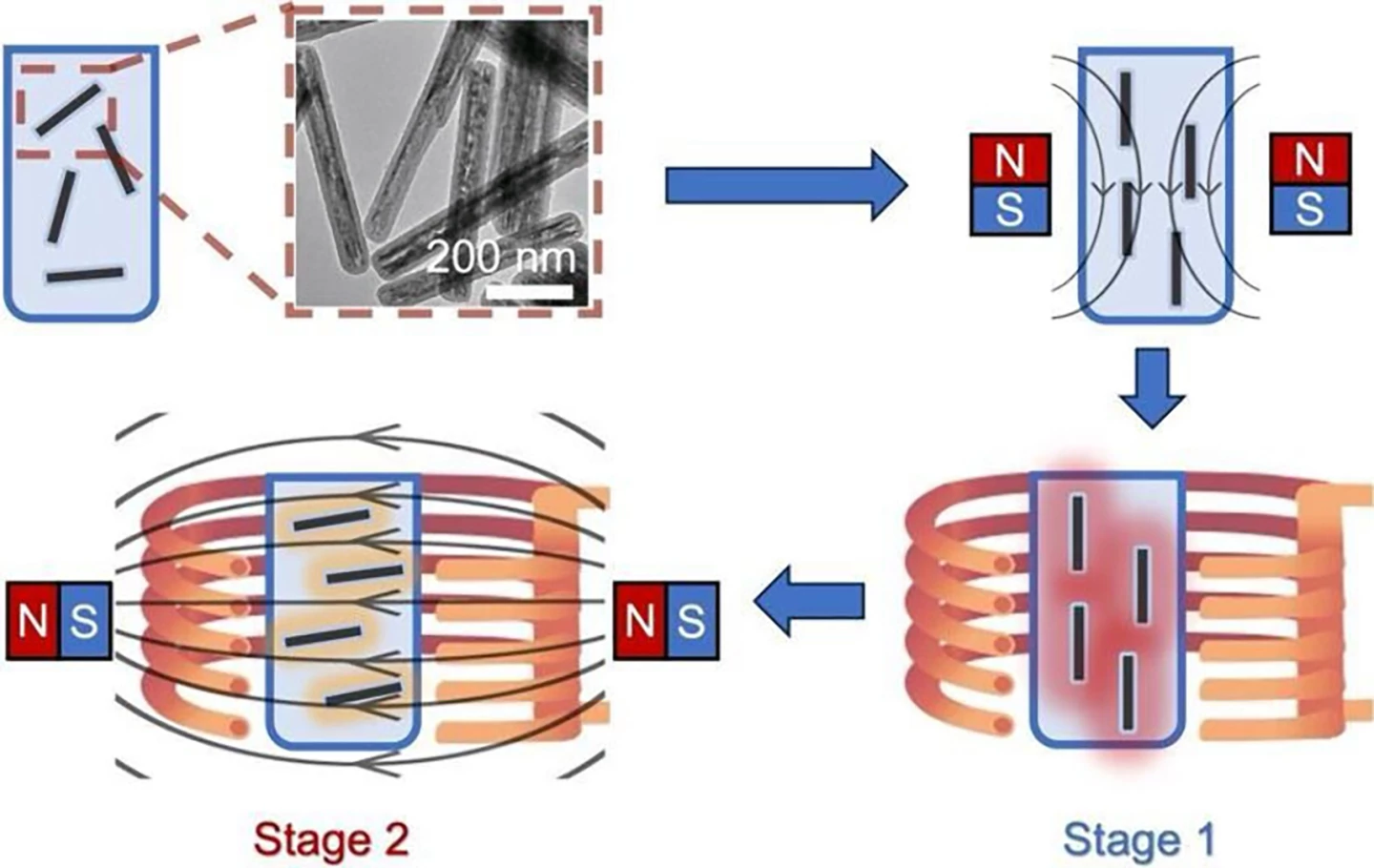A new two-step process that safely rewarms frozen tissues using nanoscale magnetic rods could help preserve donor organs long-term. The procedure provides an alternative to current time-limited methods and paves the way for more life-saving transplantations.
The gold-standard method for preserving organs prior to transplantation is static cold storage, which involves flushing the organ with preservation solution at zero to 4 °C (32–39 °F) before immersing it in preservation solution at the same temperature. However, this method provides only a short window for transplantation, depending on organ type.
Vitrification offers a means of long-term, damage-free preservation of organs. Unlike conventional freezing, which causes liquids to transition into a crystalline state, vitrification uses a cryoprotective agent to keep the fluids in a glass-like, amorphous state as the temperature drops and molecules slow down. The problem is that uniform and rapid heating is needed to prevent the formation of ice crystals. Now, researchers from the Universities of Minnesota and California, Riverside, have devised a two-step method of safely and quickly thawing and rewarming organs using nanoscale magnetic rods.
The researchers recently demonstrated that clusters of iron oxide nanoparticles exposed to an alternating magnetic field generated sufficient heat to rapidly thaw animal tissues stored at -238 °F (-150 °C) in a solution containing a cryoprotective agent and the nanoparticles. How? Exposing an electrically conductive material, such as iron oxide, to a rapidly alternating magnetic field causes eddy currents to be created in the material. The resistance felt by the eddy currents, concentrated at the material's surface, causes Joule or resistive heating.
While the previous experiment was successful, the researchers were concerned that the uneven distribution of nanoparticles within tissues might cause localized ‘hotspots,’ leading to tissue damage and toxicity caused by the melted cryoprotective agent. So, they added a second step.

The researchers tested the new and improved method on animal tissues immersed in a solution containing silicon-coated iron oxide (Fe3O4@SiO2) nanoparticles and a cryoprotective agent and then frozen with liquid nitrogen. As before, they used an alternating magnetic field to rapidly rewarm the tissues. But, this time, as the samples approached the cryoprotective agent’s melting point, the researchers applied a horizontal magnetic field to the sample, which interrupted the nanoparticles, realigning them and slowing heat production.
The researchers noted that in areas of tissue with more nanoparticles, heating slowed fastest, allaying their concerns about damaging hotspots developing. After testing the two-step process on pig carotid arteries, more than 80% of the cells remained viable after rewarming over a few minutes, suggesting the process was quick and safe.
There are over 100,000 people on the national waitlist for an organ transplant in the US, with another person being added to the list every eight minutes. The researchers say the ability to fine-tune tissue rewarming using their procedure brings us closer to long-term organ preservation and, they hope, the ability to perform more life-saving organ transplants.
The study was published in the journal Nano Letters.
Source: ACS






